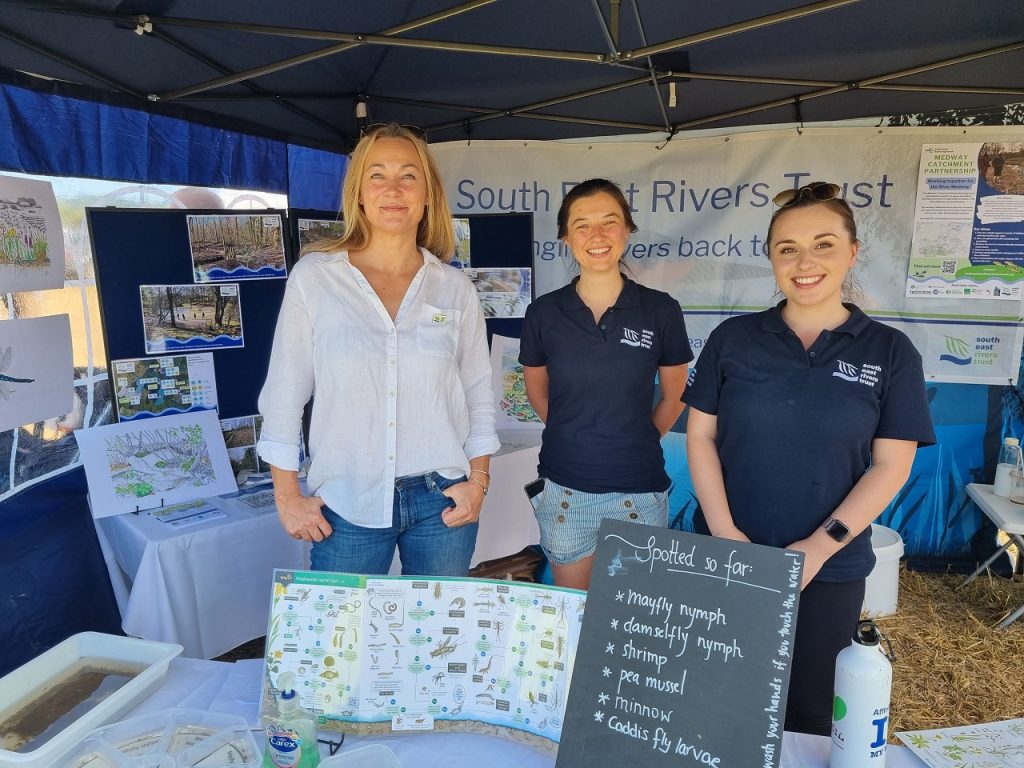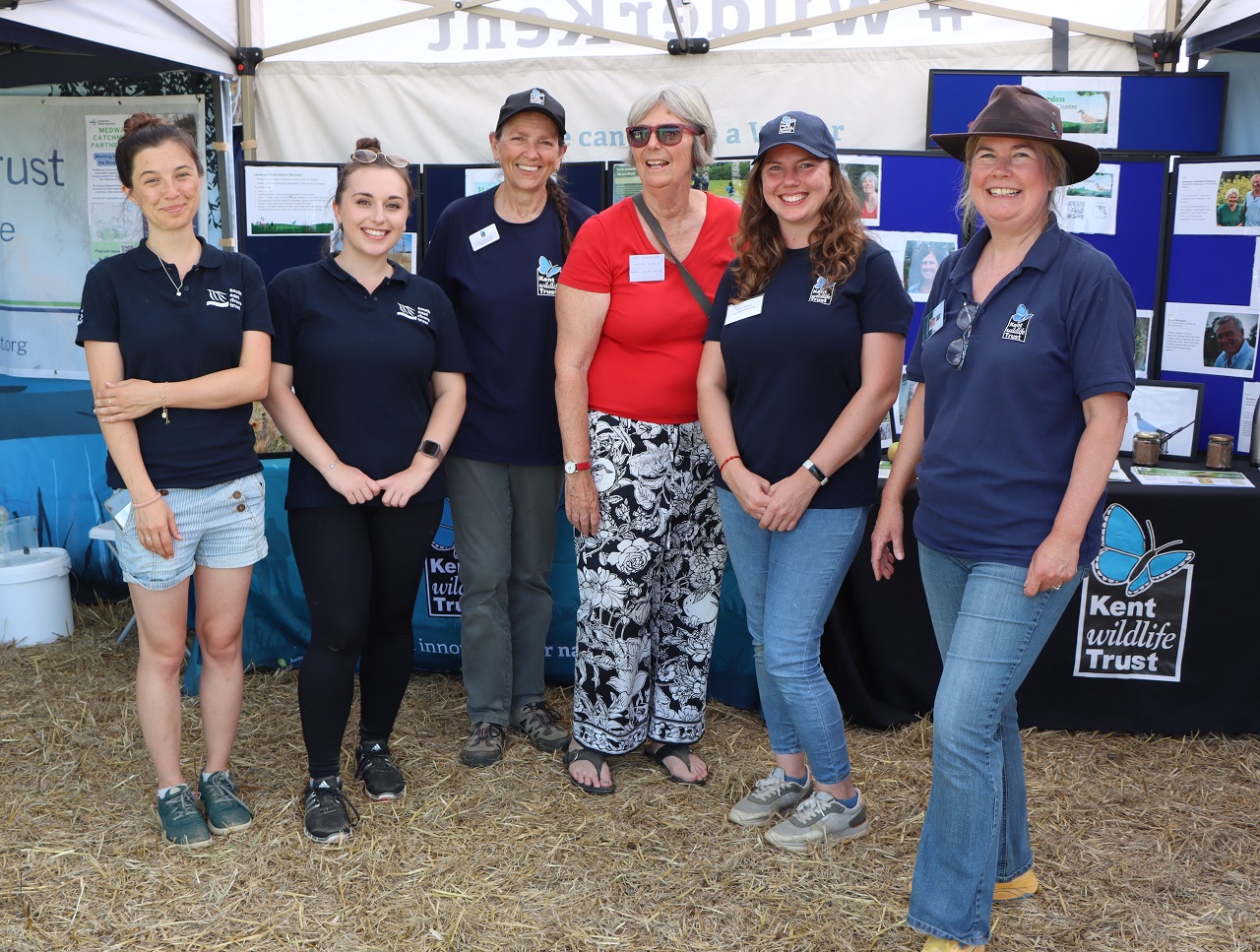Sharing a stand with the Kent Wildlife Trust at the Weald of Kent Ploughing Match in September gave us a fantastic platform to tell the public all about rivers – and in particular our work nearby, writes Cleo Alper, our River Medway Catchment Officer.
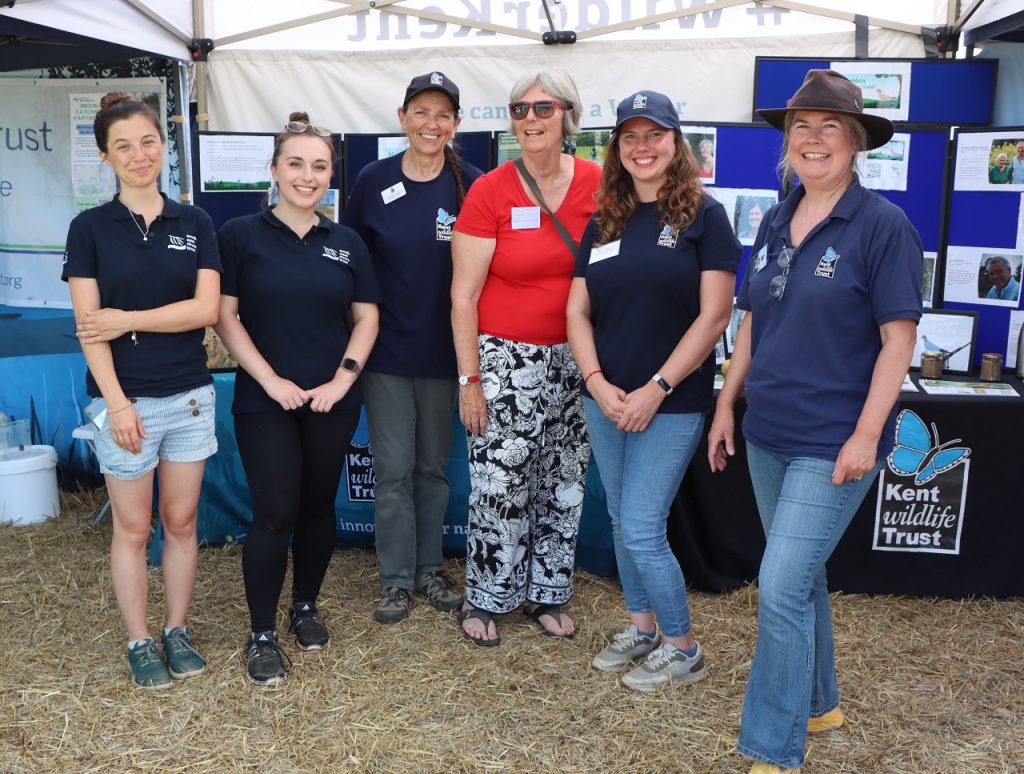
The popular annual ploughing match, run since 1947, was held near Tonbridge alongside the River Beult, where we have carried out a great deal of work, including nature-based solutions to improve water sources on land.
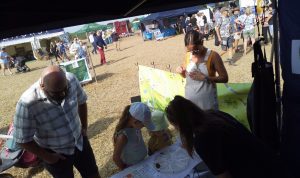
Through a Riverfly sample we sourced on the day, we demonstrated some of the life below the surface in the River Medway – of which the Beult is a tributary.
We were able to discuss with the public the importance of monitoring our waters for riverflies – mayflies, caddisflies and stoneflies – which are at the heart of freshwater ecosystems and a vital link in the aquatic food chain. Visitors to our stall were delighted to learn about these species and also see we had found shrimp and pea mussel, among other creatures.
It was inspiring to talk to more than 100 people who had a wide range of interests, knowledge and experiences of the river and local wildlife.
We had encouraging conversations around observations of what is happening with our rivers and about what the community would like to see in the future.
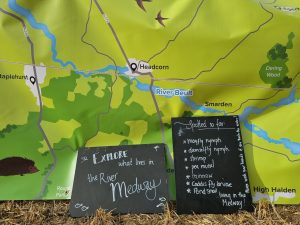
The event demonstrated both how much local people are aware of the importance of their local river and the range of concerns they have. These include diminishing wildlife and nature, water quality issues, and low water flow.
Collaborating with Kent Wildlife Trust on the stall was a real pleasure. A shared stand allowed us to talk about the work we are doing in partnership to restore rivers and our landscape and to showcase the wide range of partnership work and restoration occurring in the River Beult, one of four catchments on the Medway, and beyond.
Among the work we spoke about were the benefits of natural flood management and how these manage flood risk, increase water storage and create habitat. We also spoke about the benefits of nature-based solutions and our work on the River Teise. Here we are working on restoring wetlands to create more habitat and increase resilience to low water flows, plus putting in leaky woody structures to improve the river flow and the range of habitat. We are currently working on installing a backwater to increase biodiversity and prevent flooding.
We also told the public about our PROWATER work, managing landscapes to retain water for longer, the results of which include restoring key habitats and healthy soils and grasslands.
